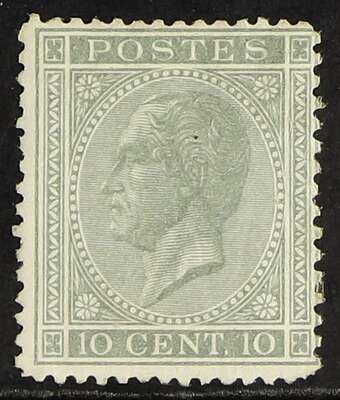
Belgium Stamps
Looks like you're not logged in
To Place a bid or wishlist lots, please log in or register an account
Belgium Stamps and Postal History
The first Belgium stamps issued on 1st July 1849, are known as the “Epaulettes”. Until 1865 her stamps followed the British tradition and didn't have the name of the country included in the design. They were one of the first signatories of the GPU in 1874, which became the UPU in 1878. However, the Flemings complained that the French name for Belgium “Belgique” was the only name on the stamps, therefore from 1893 'Belgie' was added. The name has appeared in both languages on Belgium Stamps since. Between 1893 and 1914 all stamps were produced with a detachable label inscribed 'Do not deliver on a Sunday' in French and also Flemish. All were printed with detachable bandalettes, and known as ‘Sunday Labels’ enabling the sender to indicate if delivery was to be made on a Sunday.
Their neutrality was guaranteed by the Treaty of London (1839), and a breach of this treaty led to the entry of Britain into World War I. The government moved to France on 13th October 1914 and continued to print stamps for use in that locality, and also in small unoccupied parts of Belgium. The Germans issued stamps for use in occupied Belgium on 1st October 1914. These continued in use throughout the war and were used concurrently with the stamps of the German Western Military Command from 1916. The latter was also used in the occupied area of northern France.
From 1919 until 1930, Belgian troops occupied part of the Rhineland where overprinted stamps were issued. They hoped that neutrality would be maintained, however, Germany invaded in May 1940. It's a fascinating philatelic country with collectors specialising in stamps and postal markings, including a wide range of booklet panes and railway service stamps.
Interested in Belgium stamps? Register for lot alerts
Related Pages
